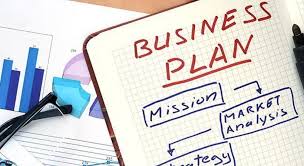A toss a coin is one of the oldest and most common methods of making decisions. Even though it’s unpredictable, it still has its place in decision-making. If you’ve ever had to make an important choice and weren’t sure which way to go, then you may have used a coin flip as a tiebreaker. But there are ways to increase your chances of coming out on top when flipping a coin. Let’s take a look at some strategies for winning with a coin flip.
The Heads or Tails Strategy
This strategy is simple but effective—all you have to do is choose heads or tails before the coin is flipped. When the coin lands, if your guess was correct, then you win! This strategy works best if you can predict which side of the coin will land facing up more often than not.
The Optimal Choice Strategy
This strategy involves choosing two different outcomes and then picking the one that has the highest probability of occurring when the coin is flipped. For example, let’s say you have two choices—heads or tails—and want to decide which one will give you the best chance of winning. In this case, you would choose heads because there are two possible outcomes (heads or tails), and both have an equal chance of occurring (50%). This means that your odds of winning are 50%.
The Probability Calculation Strategy
Using this strategy requires calculating the probability of each outcome before deciding which one to choose. For instance, let’s say you have three choices—heads, tails, or edge—and want to know which one gives you the best chance of winning. In this case, heads and tails each have a 50% chance of occurring while edge has only a 10% chance (since coins rarely land on their edges). So in this case, your optimal choice would be either heads or tails since they both have higher probabilities than edge does. This is the basic idea behind expected value—maximizing your chances of success by choosing the option with the highest probability.
Another way to use expected value is with investments. Let’s say you’re deciding between two different stocks and want to know which one gives you the best chance of making a profit. In this case, you can use expected value to calculate the probability of each stock making a profit and then weigh the two options against one another. By choosing the option with the higher expected value, you maximize your chances of success and minimize your risk.
Expected value is also useful in decision-making because it helps you compare different outcomes that have different values. For instance, let’s say you have two choices—choice A and choice B. Choice A has a 60% probability of success while choice B has only a 30% probability. However, the outcomes of each choice are different—choice A yields a $500 profit while choice B yields a $700 profit.
Flipping a coin can be an effective way to make decisions when all other options fail. But by using certain strategies such as Heads or Tails Strategy, Optimal Choice Strategy and Probability Calculation Strategy, you can increase your chances of coming out on top when flipping a coin. With these strategies in mind, next time you find yourself in need of making an important decision via coin flip you’ll be better prepared for success!




